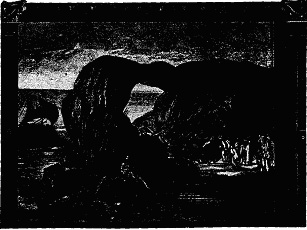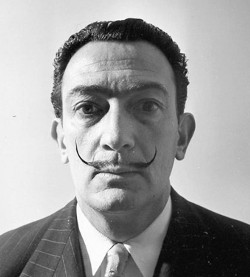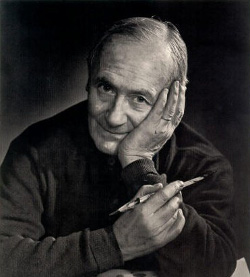Greek Painting 4
A History Of Painting - INDEX
Surrealists Book Results
As an Amazon Associate, I earn from qualifying purchases.
Surrealists Book Results
As an Amazon Associate, I earn from qualifying purchases.
The tale of his painting a bunch of grapes so like reality that the birds came to peck at them proves either that the painter's motive was deception, or that the narrator of the tale picked out the deceptive part of his picture for admiration. He painted many subjects, like Helen, Penelope, and many genre pieces on panel. Quintilian says he originated light-and-shade, an achievement credited by Plutarch to Apollodorus. It is probable that he advanced light-and-shade.
In illusion he seems to have been outdone by a rival, Parrhasios of Ephesus. Zeuxis deceived the birds with painted grapes, but Parrhasios deceived Zeuxis with a painted curtain. There must have been knowledge of color, modelling, and relief to have produced such an illusion, but the aim was petty and unworthy of the skill. There was evidently an advance technically, but some decline in the true spirit of art. Parrhasios finally suffered defeat at the hands of Timanthes of Kythnos, by a Contest between Ajax and Ulysses for the Arms of Achilles. Timanthes's famous work was the Sacrifice of Iphigenia, of which there is a supposed Pompeian copy.
SIKYONIAN SCHOOL: This school seems to have sprung up after the Peloponnesian Wars, and was perhaps founded by Eupompos, a contemporary of Parrhasios. His pupil Pamphilos brought the school to maturity. He apparently reacted from the deception motive of Zeuxis and Parrhasios, and taught academic methods of drawing, composing, and painting. He was also credited with bringing into use the encaustic method of painting, though it was probably known before his time. His pupil, Pausias, possessed some freedom of creation in genre and still-life subjects. Pliny says he had great technical skill, as shown in the foreshortening of a black ox by variations of the black tones, and he obtained some fame by a figure of Methe (Intoxication) drinking from a glass, the face being seen through the glass. Again the motives seem trifling, but again advancing technical power is shown.
THEBAN-ATTIC SCHOOL: This was the fourth school of
Greek painting. Nikomachus (fl. about 36o B.C.), a facile painter, was at its head. His pupil, Aristides, painted pathetic scenes, and was perhaps as remarkable for teaching art to the celebrated Euphranor (fl. 360 B.C.) as for his own

productions. Euphranor had great versatility in the arts, and in painting was renowned for his pictures of the Olympian gods at Athens. His successor, Nikias (fl. 340-300 B.C.), was a contemporary of Praxiteles, the sculptor, and was possibly influenced by him in the painting of female figures. He was a technician of ability in composition, light-andshade, and relief, and was praised for the roundness of his figures. He also did some tinting of sculpture, and is said to have tinted some of the works of Praxiteles.
LATE PAINTERS: Contemporary with and following these last-named artists were some celebrated painters who really belong to the beginning of the Hellenistic Period (323 B.C.). At their head was Apelles, the painter of Philip and Alexander, and the climax of Greek painting. He painted many gods, heroes, and allegories, with much " gracefulness," as Pliny puts it. The Italian Botticelli, seventeen hundred years after him, tried to reproduce his celebrated Calumny, from Lucian's description of it. His chief works were his Aphrodite Anadyomene, carried to Rome by Augustus, and the portrait of Alexander with the Thunder-bolt. He was undoubtedly a superior man technically. Protogenes rivalled him, if we are to believe Petronius, by the foam on a dog's mouth and the wonder in the eye of a startled pheasant. Aetion, the painter of Alexander's Marriage to Roxana, was not able to turn the aim of painting from this deceptive illusion. After Alexander, painting passed still further into the imitative and the theatrical, and when not grandiloquent was infinitely little over cobbler-shops and huckster-stalls. Landscape for purposes of decorative composition, and floor painting, done in mosaic, came in during the time of the Diadochi. There were no great names in the latter days, and such painters as still flourished passed on to Rome, there to produce copies of the works of their predecessors.
It is hard to reconcile the unworthy motive attributed to Greek painting by the ancient writers with the high aim of Greek sculpture. It is easier to think (and it is more probable) that the writers knew very little about art, and that they missed the spirit of Greek painting in admiring its insignificant details. That painting technically was at a high point of perfection as regards the figure, even the imitative Roman works indicate, and it can hardly be doubted that in spirit it was at one time equally strong.
<< Previous page -- Next page >>
In illusion he seems to have been outdone by a rival, Parrhasios of Ephesus. Zeuxis deceived the birds with painted grapes, but Parrhasios deceived Zeuxis with a painted curtain. There must have been knowledge of color, modelling, and relief to have produced such an illusion, but the aim was petty and unworthy of the skill. There was evidently an advance technically, but some decline in the true spirit of art. Parrhasios finally suffered defeat at the hands of Timanthes of Kythnos, by a Contest between Ajax and Ulysses for the Arms of Achilles. Timanthes's famous work was the Sacrifice of Iphigenia, of which there is a supposed Pompeian copy.
SIKYONIAN SCHOOL: This school seems to have sprung up after the Peloponnesian Wars, and was perhaps founded by Eupompos, a contemporary of Parrhasios. His pupil Pamphilos brought the school to maturity. He apparently reacted from the deception motive of Zeuxis and Parrhasios, and taught academic methods of drawing, composing, and painting. He was also credited with bringing into use the encaustic method of painting, though it was probably known before his time. His pupil, Pausias, possessed some freedom of creation in genre and still-life subjects. Pliny says he had great technical skill, as shown in the foreshortening of a black ox by variations of the black tones, and he obtained some fame by a figure of Methe (Intoxication) drinking from a glass, the face being seen through the glass. Again the motives seem trifling, but again advancing technical power is shown.
THEBAN-ATTIC SCHOOL: This was the fourth school of
Greek painting. Nikomachus (fl. about 36o B.C.), a facile painter, was at its head. His pupil, Aristides, painted pathetic scenes, and was perhaps as remarkable for teaching art to the celebrated Euphranor (fl. 360 B.C.) as for his own

productions. Euphranor had great versatility in the arts, and in painting was renowned for his pictures of the Olympian gods at Athens. His successor, Nikias (fl. 340-300 B.C.), was a contemporary of Praxiteles, the sculptor, and was possibly influenced by him in the painting of female figures. He was a technician of ability in composition, light-andshade, and relief, and was praised for the roundness of his figures. He also did some tinting of sculpture, and is said to have tinted some of the works of Praxiteles.
LATE PAINTERS: Contemporary with and following these last-named artists were some celebrated painters who really belong to the beginning of the Hellenistic Period (323 B.C.). At their head was Apelles, the painter of Philip and Alexander, and the climax of Greek painting. He painted many gods, heroes, and allegories, with much " gracefulness," as Pliny puts it. The Italian Botticelli, seventeen hundred years after him, tried to reproduce his celebrated Calumny, from Lucian's description of it. His chief works were his Aphrodite Anadyomene, carried to Rome by Augustus, and the portrait of Alexander with the Thunder-bolt. He was undoubtedly a superior man technically. Protogenes rivalled him, if we are to believe Petronius, by the foam on a dog's mouth and the wonder in the eye of a startled pheasant. Aetion, the painter of Alexander's Marriage to Roxana, was not able to turn the aim of painting from this deceptive illusion. After Alexander, painting passed still further into the imitative and the theatrical, and when not grandiloquent was infinitely little over cobbler-shops and huckster-stalls. Landscape for purposes of decorative composition, and floor painting, done in mosaic, came in during the time of the Diadochi. There were no great names in the latter days, and such painters as still flourished passed on to Rome, there to produce copies of the works of their predecessors.
It is hard to reconcile the unworthy motive attributed to Greek painting by the ancient writers with the high aim of Greek sculpture. It is easier to think (and it is more probable) that the writers knew very little about art, and that they missed the spirit of Greek painting in admiring its insignificant details. That painting technically was at a high point of perfection as regards the figure, even the imitative Roman works indicate, and it can hardly be doubted that in spirit it was at one time equally strong.



